
Let's talk Austrian Black and Tan Hounds
The glossy black coat, the longing stare, the swift gait: The Austrian Black and Tan Hound is one lovely dog, and a rarity among canines, known mostly in their native Austria. They are superb sport dogs, classified as scent hounds because of their incredibly keen sense of smell. On the homefront, expect a highly affectionate, doting dog, one who is great with children once trained and parents alike.Official name: Austrian Black and Tan Hound
Other names: Austrian Black and Tan Brachet, Austrian Smooth-Coated Hound, Brandlebracke, Bracke, Vieraugl
Origins: Austria

| Drooling tendencies |
|
Warm weather? |  |
| Shedding level |  |
Suited to apartment living? | |
| Energy level (high, low, medium) *: | High | Family pet? * |
|
| Compatibility with other pets | Can stay alone?* | 
|
* We advise against leaving pets alone for long stretches. Companionship can prevent emotional distress and destructive behaviour. Speak to your veterinarian for recommendations.
Every pet is different, even within a breed; this snapshot of this breed’s specifics should be taken as an indication.
For a happy, healthy and well-behaved pet, we recommend educating and socialising your pet as well as covering their basic welfare, social and behavioural needs.
Pets should never be left unsupervised with a child.
All domestic pets are sociable and prefer company. However, they can be taught to cope with solitude from an early age. Seek the advice of your veterinarian or trainer to help you do this.
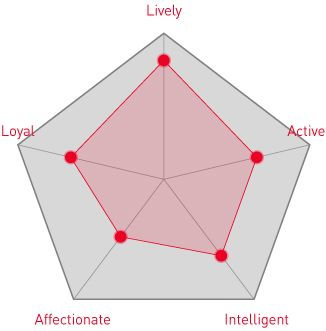

| Baby age: | Birth to 2 months |
| Puppy age: | 2 to 12 months |
| Adult age: | 1 to 7 years |
| Mature age: | 7 to 10 years |
| Senior age: | from 10 years |
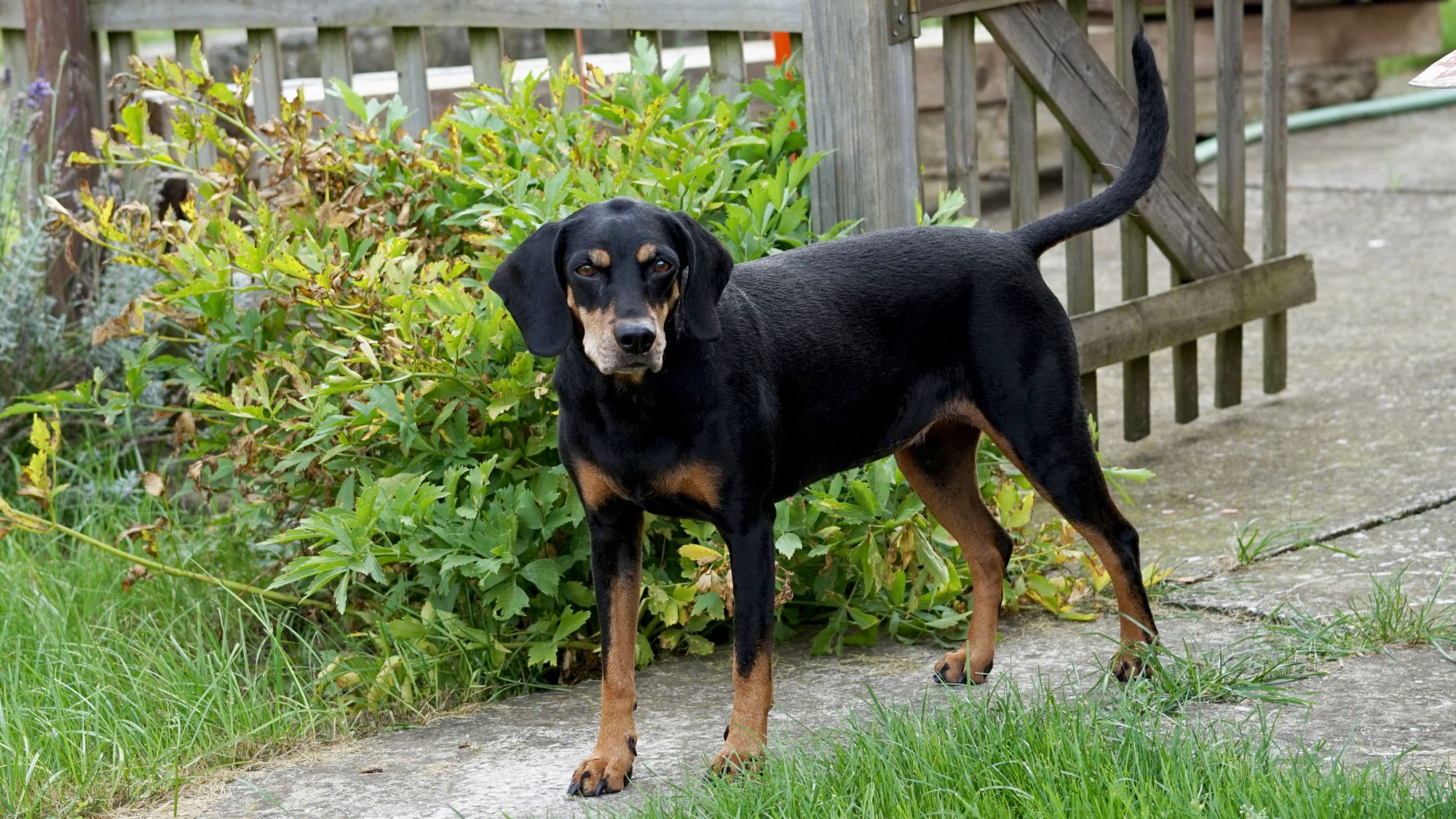
1/7
Get to know the Austrian Black and Tan Hound
All you need to know about the breed
The rare and ravishing Austrian Black and Tan Hound makes quite an impression, with both their appearance and their well-mannered disposition. Little known outside of Austria, their country of origin, the breed is nonetheless hugely popular there, and has been so since their rise to fame in the mid-1800s.
The Austrian Black and Tan Hound breed is prized for their huge determination when out in the field, along with their over-the-top sense of smell. Agility and endurance are on their side, so expect a need for speed in the form of daily walks or running around a large, enclosed space if kept as a family pet. Although not one to wander off, the Austrian Black and Tan Hound will still need to be observed when it comes to outdoor time as they are a true hound and do have a prey drive that can prove to dominate.
That said, this is a dog that is suited for the country almost exclusively and, given their respectable size, will not flourish if kept in an urban house – or smaller – as well as they would in wide open spaces. Expect a thrill for outdoor time from this energetic breed.
Expect a devoted dog too in the Austrian Black and Tan Hound, especially with little ones, whom they seem to naturally gravitate toward. Like any breed though, they should be trained appropriately to understand the miniature humans in their midst. And the reverse is also true.
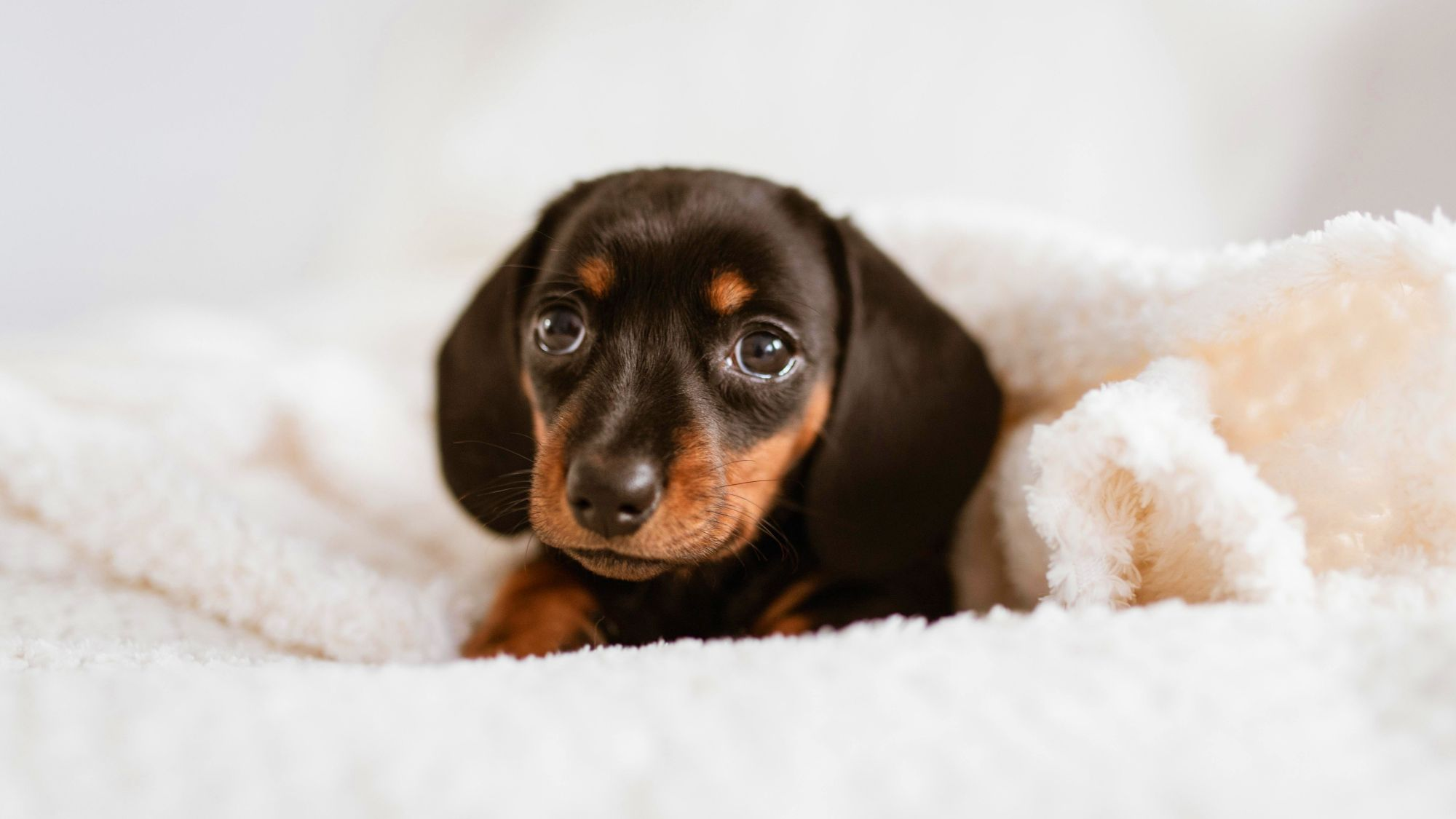
2/7
2 facts about Austrian Black and Tan Hounds
1. Keeps a low profile
The Austrian Black and Tan Hound is not so well known outside of their home country of Austria, where the breed is used more as a working dog than a family one. Mind you, they’re well-suited to spend time with humans, but they are hugely treasured as sport dogs first. Sometimes tradition reigns supreme.
2. Black and brown are the new black
The Austrian Black and Tan Hound is celebrated for their easygoing demeanour. What better starting point than a streamlined coat as well, that comes in only black and tan. The jet-black coat is shiny in finish and dappled with hues that range from light tan to dark fawn, found around the eyes, jaw, knees, and paws, among other places on the body. Sometimes in dogs, as in life, simple is best.
History of the breed
Like so much that concerns the Austrian Black and Tan Hound, their history is a streamlined one. They are said to emanate from the Keltenbracke, a breed of Celtic Shorthaired Pointers that has historically been found throughout Northern Europe. The dogs had a reputation for being fearless hounds who could run for many miles and were ridiculously sturdy in the field.
During the late 1800s, Austrian breeders started to develop a breed who could capitalise on these traits, and especially wanted a dog with a superb nose and endless endurance. The hound they produced gradually came into their own as the Austrian Black and Tan Hound that we know today, and has held a very proud place in Austria ever since.
The Austrian Black and Tan Hound was recognised by the Fédération Cynologique in 1954 and by the United Kennel Club in 2006.

4/7
From head to tail
Physical characteristics of Austrian Black and Tan Hounds
1. Ears
Fairly long ears hanging aside head, rounded ends.
2. Head
Head in proportion to body, docile gaze.
3. Body
Long, lithe body marked by strong neck and wide chest.
4. Tail
Long tail, slightly curved, tapers to end.
5. Coat
Shiny, short, smooth coat lying close to body, signature black and tan colours only.
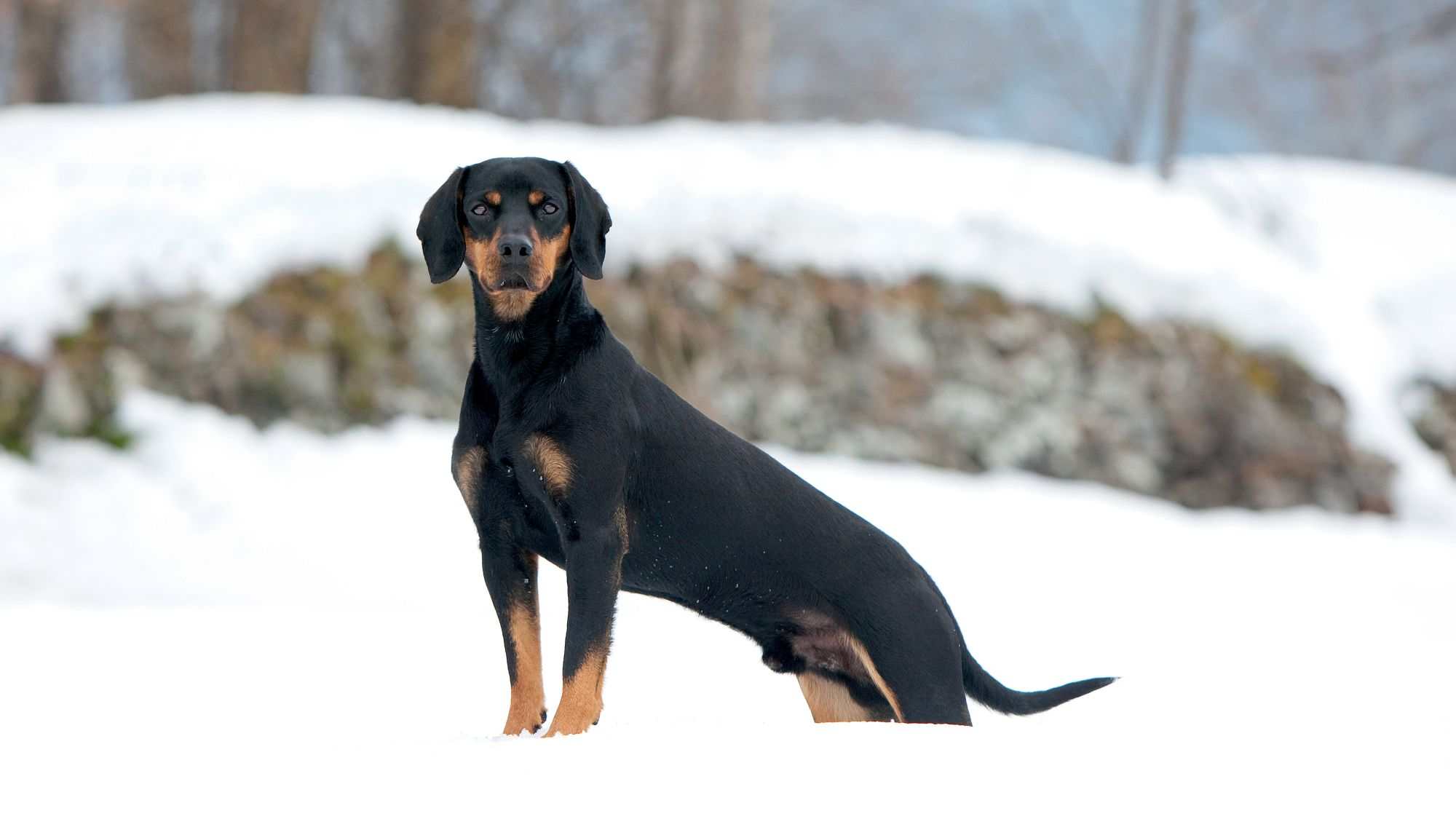
5/7
Things to look out for
From specific breed traits to a general health overview, here are some interesting facts about your Austrian Black and Tan Hound
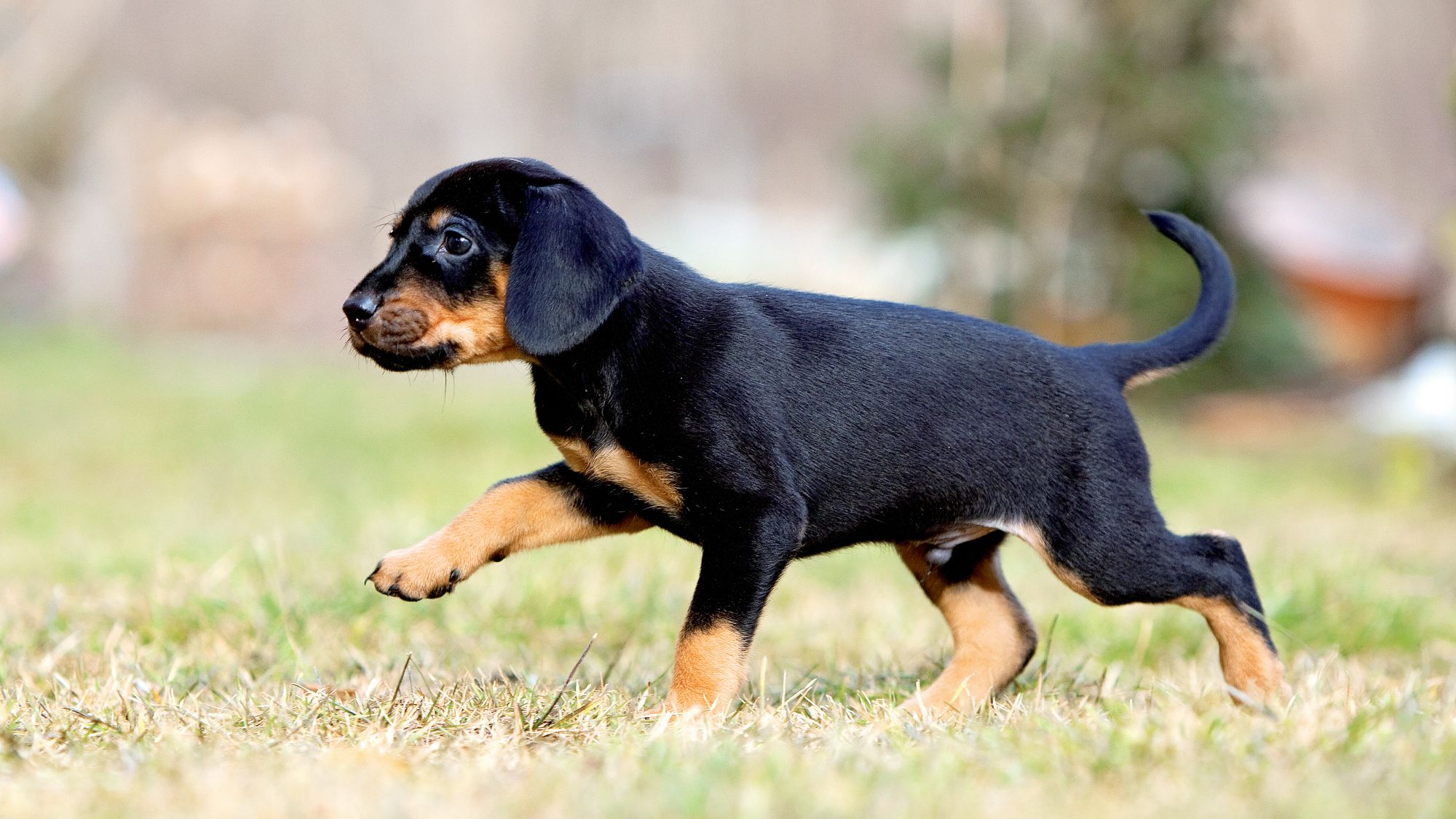
6/7
Caring for your Austrian Black and Tan Hound
Grooming, training and exercise tips
A short, dense coat makes for a straightforward grooming routine for the Austrian Black and Tan Hound. Weekly brushing will do, to maintain their sleek ebony fur. Since this is an outdoor dog, baths should be had on an as-needed basis, and their ears and toe pads should be checked for any debris that may have been picked up.Exercise should be a regular part of the Austrian Black and Tan Hound’s routine. They’ve been bred over many years as a sport dog so have a real need to run, and can do so for very long distances without tiring (the breed is often described as inexhaustible). Jogging, playing frisbee, romping with fellow canines, all are fun for this very affable breed. This is not a dog to be kept indoors or for city dwellers as they could become bored or destructive.
Trainability is one of the aspects that has kept the Austrian Black and Tan Hound as a cherished breed over the decades. They are eager to please, especially their owners, so accepting commands is a delight to them. Neither shy nor aggressive, the breed can still at times be wary of strangers until properly warmed up. Then, just try to get them away from you. Training challenges that test their wits are perfect for the Austrian Black and Tan Hound to keep them sharp. Watch a high prey drive when smaller pets are in the house as well.
7/7
All about Austrian Black and Tan Hounds
Many hounds have common characteristics: Long ears, a short-haired coat, and sweet, pleading eyes. The Austrian Black and Tan Hound and the Black and Tan Coon Hound embody these traits and, to complicate matters further, have sleek black coats with brown highlights! They are two entirely different breeds though, with the Coon Hound being taller and the Austrian Black and Tan Hound a decidedly more social dog.
In their homeland, yes. The Austrian Black and Tan Hound is a customary sight for dog lovers there but a very rare breed outside of Austria. The breed is renowned for their use as a sporting dog, not to mention their good looks and docile manner.
translations.feature.breeds.otherbreeds
Read more on this topic

How your dog's nutrition needs change with age

How to adopt a dog

Things to consider before getting a dog
Sources
1 - Veterinary Centers of America https://vcahospitals.com/
2 - Royal Canin Dog Encyclopaedia. Ed 2010 and 2020
3 - Banfield Pet Hospital https://www.banfield.com/
4 - Royal Canin BHN Product Book
5 - American Kennel Club https://www.akc.org/


